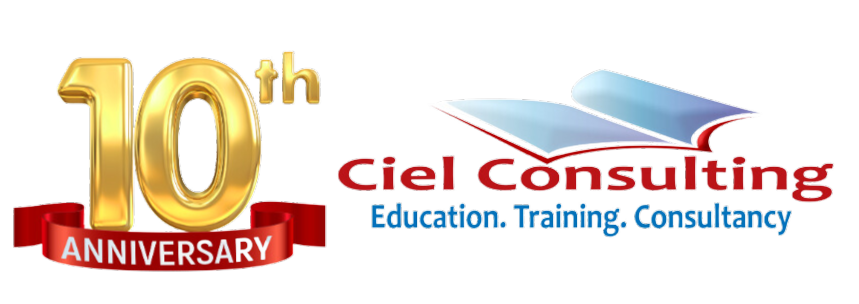Who Has Responsibility For Managing Work Health & Safety Risks?
Managing Work Health And Safety Risks
The WHS Act and Regulations require persons who have a duty to ensure health and safety to ‘manage risks’ by eliminating health and safety risks so far as is reasonably practicable, and if it is not reasonably practicable to do so, to minimize those risks so far as is reasonably practicable.
Persons conducting a business or undertaking will have health and safety duties to manage risks if they:
engage workers to undertake work for them, or if they direct or influence work carried out by workers
may put other people at risk from the conduct of their business or undertaking
manage or control the workplace or fixtures, fittings or plant at the workplace
design, manufacture, import or supply plant, substances or structures for use at a workplace
install, construct or commission plant or structures at a
Deciding what is ‘reasonably practicable to protect people from harm requires taking into account and weighing up all relevant matters, including:
the likelihood of the hazard or risk concerned occurring
the degree of harm that might result from the hazard or risk
knowledge about the hazard or risk, and ways of eliminating or minimizing the risk
the availability and suitability of ways to eliminate or minimize the risk, and
after assessing the extent of the risk and the available ways of eliminating or minimizing the risk, the cost associated with available ways of eliminating or minimizing the risk, including whether the cost is grossly disproportionate to the
The process of managing risk described in this Code will help you decide what is reasonably practicable in particular situations so that you can meet your duty of care under the
WHS laws.
Officers (for example company directors) must exercise due diligence to ensure that the business or undertaking complies with the WHS Act and Regulations. This includes taking reasonable steps to:
gain an understanding of the hazards and risks associated with the operations of the business or undertaking
ensure that the business or undertaking has and uses appropriate resources and processes to eliminate or minimize risks to health and
A person can have more than one duty and more than one person can have the same duty at the same time.
The meaning of key terms
Hazard means a situation or thing that has the potential to harm a person. Hazards at work may include noisy machinery, a moving forklift, chemicals, electricity, working at heights, a repetitive job, bullying, and violence in the workplace.
The risk is the possibility that harm (death, injury or illness) might occur when exposed to a hazard.
Risk control means taking action to eliminate health and safety risks so far as is reasonably practicable, and if that is not possible, minimizing the risks so far as is reasonably practicable. Eliminating a hazard will also eliminate any risks associated with that hazard.
What is Involved in Managing Risks
MANAGEMENT COMMITMENT
Effective risk management starts with a commitment to health and safety from those who operate and manage the business or undertaking. You also need the involvement and cooperation of your workers, and if you show your workers that you are serious about health and safety they are more likely to follow your lead.
To demonstrate your commitment, you should:
get involved in health and safety issues
invest time and money in health and safety
ensure health and safety responsibilities are clearly
A STEP-BY-STEP PROCESS
A safe and healthy workplace does not happen by chance or guesswork. You have to think about what could go wrong at your workplace and what the consequences could be. Then you must do whatever you can (in other words, whatever is ‘reasonably practicable to eliminate or minimize health and safety risks arising from your business or undertaking.
This process is known as risk management and involves the four steps set out in this Code (see Figure 1 to the right):
identify hazards – find out what could cause harm
assess risks if necessary – understand the nature of the harm that could be caused by the hazard, how serious the harm could be and the likelihood of it happening
control risks – implement the most effective control measure that is reasonably practicable in the circumstances
review control measures to ensure they are working as
Many hazards and their associated risks are well known and have well established and accepted control measures. In these situations, the second step to formally assess the risk is unnecessary. If, after identifying a hazard, you already know the risk and how to control it effectively, you may simply implement the controls.
Risk management is a proactive process that helps you respond to change and facilitate continuous improvement in your business. It should be planned, systematic and cover all reasonably foreseeable hazards and associated risks.
CONSULTING YOUR WORKERS
Section 47: The WHS Act requires that you consult, so far as is reasonably practicable, with workers who carry out work for you who are (or are likely to be) directly affected by a work health and safety matter.
Section 48: If the workers are represented by a health and safety representative, the consultation must involve that representative.
Consultation involves sharing of information, giving workers a reasonable opportunity to express views and taking those views into account before making decisions on health and safety matters.
Consultation involves sharing of information, giving workers a reasonable opportunity to express views and taking those views into account before making decisions on health and safety matters.
Consultation with workers and their health and safety representatives is required at each step of the risk management process. By drawing on the experience, knowledge, and ideas of your workers you are more likely to identify all hazards and choose effective control measures.
You should encourage your workers to report any hazards and health and safety problems immediately so that risks can be managed before an incident occurs.
If you have a health and safety committee, you should engage the committee in the risk management process as well.
CONSULTING, CO-OPERATING AND CO-ORDINATING ACTIVITIES WITH OTHER DUTY HOLDERS
Sometimes you may share responsibility for a health and safety matter with other business operators who are involved in the same activities or who share the same workplace. For example, if you engage on-hire workers as part of your workforce you share a duty of care to these workers with the business that provides them. In these situations, you must discuss the hazards and risks associated with the work and what precautions will be taken with the on-hire firm.
Never assume that someone else is taking care of a health and safety matter. Find out who is doing what and work together with other duty holders in a cooperative and coordinated way so that all risks are eliminated or minimized as far as reasonably practicable.
When entering into contracts you should communicate your safety requirements and policies, review the job to be undertaken, discuss any safety issues that may arise and how they will be dealt with. Remember that you cannot transfer your responsibilities to another person.
Further guidance on consultation is available in the Code of Practice: Work Health and Safety Consultation, Co-operation and Co-ordination.
When should a risk management approach be used?
Managing work health and safety risks is an ongoing process that is triggered when any changes affect your work activities. You should work through the steps in this Code when:
starting a new business or purchasing a business
changing work practices, procedures or the work environment
purchasing new or used equipment or using new substances
planning to improve productivity or reduce costs
new information about workplace risks becomes available
responding to workplace incidents (even if they have caused no injury)
responding to concerns raised by workers, health and safety representatives or others at the workplace
required by the WHS regulations for specific hazards
It is also important to use the risk management approach when designing and planning products, processes or places used for work because it is often easier and more effective to eliminate hazards before they are introduced into a workplace by incorporating safety features at the design stage.
Reference: HSEBlog

